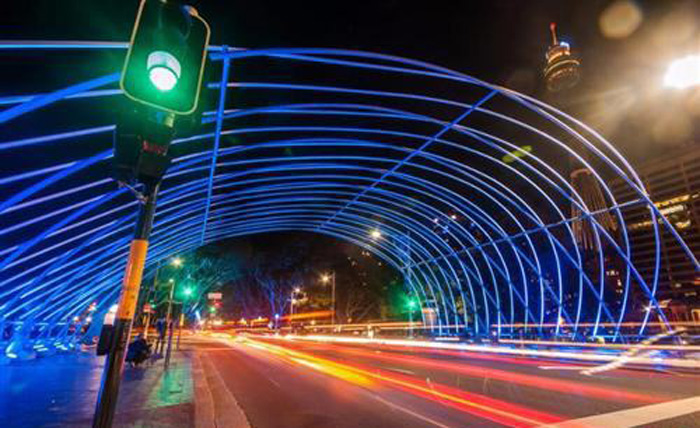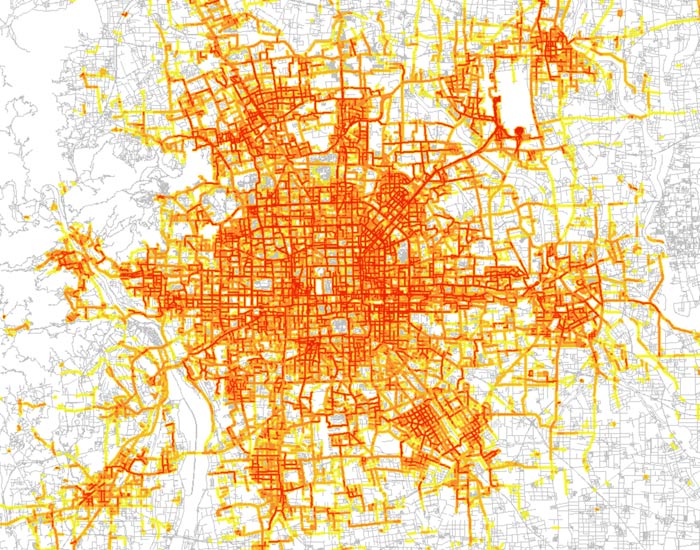


file photo
Sitting on perhaps the world’s largest data pool, China wants to use its AI and big data technology to fix one of the biggest headaches faced by many governments: traffic jams.
As one small but significant improvement, more than 1,200 traffic lights in 20 Chinese cities have been updated to guarantee the best traffic flow, as they now calculate the best timing so that cars passing through the first green light will meet another green light at the second crossroad.
In other cases, which are more commonly seen in China, long lines of cars have to wait at a string of red lights at crossroads, resulting in a slow traffic flow.
In Ji’nan, eastern China’s Shandong province, citizens have saved 30,000 hours of waiting at 344 crossroads, cutting a total of 44,000 tons of CO2 emissions.
The technology, provided by China’s car-hailing giant Didi Chuxing, uses the company’s huge data pool to specifically locate each driver registered on the platform and measure the waiting time at a red light by calculating the distance between a driver and a traffic light, which is more efficient than surveillance cameras with a limited view.
Meanwhile, the nationwide video-surveillance network is also ready for more efficient utilization.
In Hangzhou, eastern China’s Zhejiang province, patrol officers have been partly replaced by hundreds of surveillance cameras in the city, which can identity 500 incidents and accidents every day with an accuracy rate of 92 percent.
Alibaba Cloud, the provider of the technology, has also helped the city improve traffic flow at crossroads by 15 percent through the use of dynamic traffic light control. It has brought the technology to Kuala Lumpur to speed up traffic at 281 crossroads in the Malaysian capital with AI, cloud computing, and big data.
“China is already home to the fastest-growing transportation services. We think China’s sustainable transportation pattern can be learned across the world,” said Cheng Wei, CEO of Didi Chuxing, at a smart travel summit on Jan 25.
With a population of 1.3 billion people, transportation in China has never been an easy task, especially when people flock to major cities like Beijing, Shanghai, and Hangzhou for better jobs.

A congestion map of Beijing. Photo courtesy of Didi Chuxing
Beijing, for example, has been dealing with light to medium traffic congestion since 2007, except for 2008 when the Olympic Games were held and the city began to use odd-even-numbered license plates policy to limit the number of private cars on the road each day, Guo Jifu, director of the Beijing Transport Institute, said at the summit.
The capital city of China has a population of over 21 million – about the total population of US State of Florida, which is ten times bigger than the city in landmass. Since the 1980s, Beijing’s road construction has been expanding, but at the same time, car ownership has been outpacing urban design at an annual growth rate of over 20%, according to Guo.

 Award-winning photos show poverty reduction achievements in NE China's Jilin province
Award-winning photos show poverty reduction achievements in NE China's Jilin province People dance to greet advent of New Year in Ameiqituo Town, Guizhou
People dance to greet advent of New Year in Ameiqituo Town, Guizhou Fire brigade in Shanghai holds group wedding
Fire brigade in Shanghai holds group wedding Tourists enjoy ice sculptures in Datan Town, north China
Tourists enjoy ice sculptures in Datan Town, north China Sunset scenery of Dayan Pagoda in Xi'an
Sunset scenery of Dayan Pagoda in Xi'an Tourists have fun at scenic spot in Nanlong Town, NW China
Tourists have fun at scenic spot in Nanlong Town, NW China Harbin attracts tourists by making best use of ice in winter
Harbin attracts tourists by making best use of ice in winter In pics: FIS Alpine Ski Women's World Cup Slalom
In pics: FIS Alpine Ski Women's World Cup Slalom Black-necked cranes rest at reservoir in Lhunzhub County, Lhasa
Black-necked cranes rest at reservoir in Lhunzhub County, Lhasa China's FAST telescope will be available to foreign scientists in April
China's FAST telescope will be available to foreign scientists in April